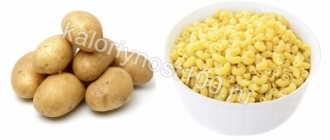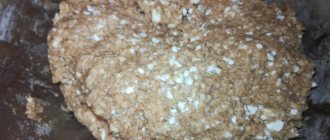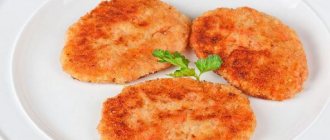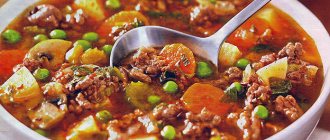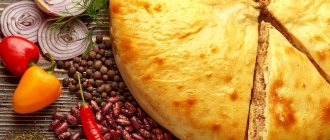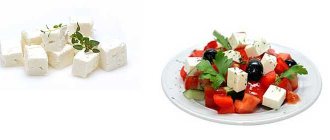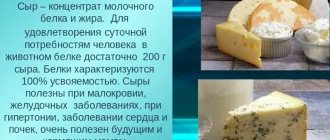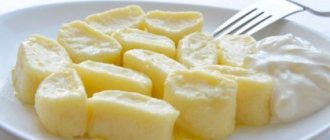A person strives to include healthy foods in his diet. Among nutritionists and doctors, there is debate regarding foods, their content of calories, fats and carbohydrates, and which of these elements, when oversaturated, cause more harm to the body. Of course, only strict control over the inclusion of dishes in the menu will protect against the development of certain diseases and reduce obesity, but you also cannot do without a balance of fats and carbohydrates in food . When used in moderation, they ensure normal organ functionality .
What are fats and carbohydrates
Fats contain glycerin and fatty acids . Nutrition is considered correct if the body regulates the exchange of the main components supplied with food. Thanks to fats:
- An energy resource is being formed.
- Provides healthy hair and skin.
- Vitamins are absorbed.
- Immunity is supported.
Beneficial ones enter the body along with foods:
- Fish.
- Nuts.
- Seeds.
- Vegetables.
- Vegetable oils - olive, sunflower, flaxseed.
The following are considered harmful from the category of solids found in food:
- Meat.
- Sausage.
- Bakery.
- Confectionery - fast foods, sauces and sodas.
The danger of exposure to harmful substances lies in dietary rationing , which is difficult to control, which leads to increased cholesterol and weight gain.
Carbohydrates include substances, their basis is:
- Sugar.
- Fructose.
- Glucose.
Various organic compounds provide energy to humans, half of which comes from carbohydrates. When the body has the required amount of glucose, the following function normally:
- Brain.
- Central nervous system.
- Kidneys.
Carbohydrates can be simple and complex ; the combination of elements must be in the body in a strict ratio of 25% to 75% . Therefore, when nutritionists require a balanced diet, this means that it should come from food - 30% fat, and at least 40% carbon. At the same time, with the correct distribution of substances between breakfast, lunch and dinner.
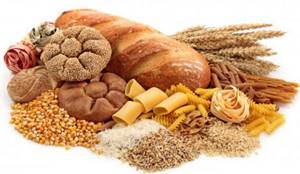
Calorie intake in our lives
When my friend, whom I started talking about, is visiting me, I see how she looks with poorly concealed horror at my preparation of vegetable salads, where I pour olive oil with a generous hand. At the same time, she knows that I am a nutritionist. I eat a lot and enjoy it, but at the same time I am much slimmer and healthier than she is. Although, even in fitness, she is ahead of the rest, and I definitely can’t keep up with her. Zumba, step, exercise bike, strength training... She once tried to ask me how she should eat in order to lose weight, but the advice to add fats to her diet scared her so much that she doesn’t ask me about anything like that anymore. It's been two years now. True, her weight is growing and growing...
Fats got a bad rap many years ago.
At first there were people who claimed that a person, just like a machine, consumes energy from food and burns it. Then a man appeared who not only decided to denigrate fats, but came up with a theory (by the way, still not really confirmed) about the dangers of animal fats . In general, let's be honest, fats got a real hard time.
If you find women's magazines even from five years ago, you will find that they are full of advice on how to reduce the calorie content of any dish. At the same time, the most “effective” tool for optimizing caloric intake in these tips is reducing fat. Skinless chicken and bluish, tasteless chicken breast, teaspoons of butter for a decent portion of food, or just lemon juice instead of dressing - all this comes from there. And maybe it’s just me who is surprised, but, my dears, this approach is a thing of the past.
But how difficult it is to convince people who have avoided fat for years. I even recorded a short video about daily fat intake, watch:
Just the other day I spoke with a client who claimed that she is not at all afraid of fats and does not avoid them. But when we began to select options for snacks and breakfasts for her, she carefully asked: “And if I eat 15 nuts for breakfast, does that mean I can’t have nuts for a snack that day? After all, they are so high in calories.” Answer: it is possible and necessary. Let me explain why.
Calories are different. I wrote about this in detail here. Today let's compare fats with carbohydrates. For example, let's take a bun (any bun, even a healthy whole grain one) and nuts.
Health risks from unhealthy fats
What you need to be wary of is not natural fats in moderate quantities, but hydrogenated , hydrogenated , derivatives of vegetable oils that are heated at high temperatures. To speed up the reaction, chemical elements are added, they are also called trans fats . This type has gained immense popularity in the food industry due to:
- Refractoriness.
- Long shelf life.
- Good taste.
The structure of blood vessels and arteries in human organs requires high-quality lubrication and vitamins, which cannot be provided by an artificial analogue. As a result, a person is threatened with vascular genesis in the form of:
- Cardiac ischemia , the myocardial muscle does not receive enough oxygen, it cannot cope with the load.
- Heart attacks - blood vessels become clogged, preventing blood from flowing to the heart.
- Strokes from lack of oxygen and nutrients.
- Ischemic lesions in the vessels of the extremities.
- Angina pectoris from long-term ischemic diseases.
A person cannot walk or endure physical activity. But trans fats can be created not only artificially, but also in nature. Milk contains up to 5% , and meat contains about 10% . The stomach of cows is specially designed; the hydrogenation process takes place in the chamber. At the same time, the negative impact of both industrial and natural components occurs at the same level:
- Depletion of the circulatory system.
- Formation of cholesterol plaques.
- Metabolic disorders.
The diet should be careful to maintain a balance between saturated and unsaturated fats.
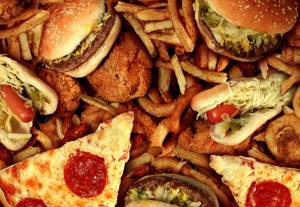
Calories created by fat consumption
It's a completely different picture if you get your calories from fat.
Even from regular oil. Fats, in principle, are absorbed longer and more difficult. It takes a lot of digestive enzymes and time to break them down. And if you lack enzymes or have low stomach acidity, it will be even more difficult for you to fully absorb them. That is, the likelihood of assimilation of fats and all their caloric content is generally in question.
In addition, the body needs fats in the diet for many other purposes: building cells, producing hormones, producing cholesterol (and we need it vitally!)... When our body receives something, it cares primarily about ensuring the most important processes in survival . And if the body needs (and it does) to produce hormones and protect cells, but it doesn’t have enough fat, then it won’t care about your fatigue or providing you with energy. It will first take care of the main thing - the construction of new cells and the production of hormones. And only then, everything that remains from the incoming fats will be used to provide energy.
That is why there is a high probability that if you received 100 kilocalories from fats, then you may not have enough energy from them at all. For example, you “ate” 100 kilocalories, but your body took 60 from you to build everything it needed there. In the end, you only have 40 left! That is, you have a lack of calories in your diet. It is on this principle that a fatty diet is based, when a person almost completely excludes carbohydrates (but not completely, as in the Kremlin diet or the Dukan diet ), but at the same time, the fat content of his diet is off the scale even in the eyes of a fat lover like me. I promise to write more about this diet in the near future.
Yes, it’s over, if you have too much of anything, be it fats, even carbohydrates, even protein, all of this will invariably be deposited in the form of fat reserves. But, as can be seen from the example, the likelihood of gaining weight from fats is several times less than from carbohydrate foods.
Harm from carbohydrates
Each product can be either harmful after industrial processing or beneficial due to the presence of nutrients:
- foods rich in carbohydrates at night ; they tend to quickly break down and quickly destroy the energy reserve accumulated during the day.
- Monosaccharides are dangerous due to the production of glucose, which increases sharply. To normalize the situation, the pancreas begins to actively secrete insulin, distributes sugar throughout the cells, reducing its concentration in the blood. The brain receives a signal about violations, a person begins to feel hungry, he begins to eat without measure and gets fat.
- During the day, consuming foods with fast carbohydrates increases cholesterol , blockage of blood vessels can occur, and heart disease develops on this basis.
For normal functioning of organs without obesity, each person can consume no more than 100-200 g of carbohydrates per day , depending on body weight.
Are we denying ourselves carbohydrates? Not at all!
I'm not advocating that you give up carbs completely. We also need them, and, above all, from the point of view of providing us with energy. But if you are still counting the nuts you eat per day in your diet, give it up. Urgently. I hope I have convinced you, and now you will indignantly read women's magazines with advice on “how to pour less oil into your salad.”
Finally, I would like to note that all of the above applies to ALL fats, not just vegetable ones. Therefore, you should not be afraid of them.
Good health to you!
My dears! Thanks for reading. I am sharing valuable information with you for free and will be very grateful if you share this article on your social networks or leave a comment.
PS If you need individual advice, please contact us! Details are here.
Did you like the article? To avoid losing sight of the blog, subscribe to the news! This can be done in the upper right corner or by becoming a member of my VKontakte or Facebook groups (links are also in the right column).
PPS I started a channel on YouTub, where EVERY TUESDAY I briefly, for 10-20 minutes, answer your questions (they can be asked under any post)
Main photo source: https://foodiesfeed.com
ATTENTION! This article is not a direct guide to action. Please do not self-medicate and consult a specialist. The author is not responsible for the consequences of independently selected treatment.
Sources of healthy carbohydrates - food list
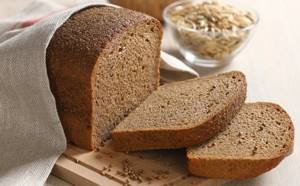
You don’t have to think that healthy food is necessarily something tasteless. The right sugars are found in the following foods:
- rye and whole grain bread;
- bran;
- durum wheat spaghetti;
- cereals other than polished rice;
- nuts, seeds, flax seeds;
- fresh herbs, vegetables, unsweetened fruits;
- all legumes.
From this set of components you can create a delicious and varied menu, combining them with protein dishes and vegetable fats. These healthy foods, rich in carbohydrates, are best consumed for lunch, but not for dinner, so that the complex substances have time to be completely digested.
How to lose weight without dieting
Let's figure out once and for all how to lose weight without dieting and is it even possible?
What is more important: calories, nutrition or food quality?
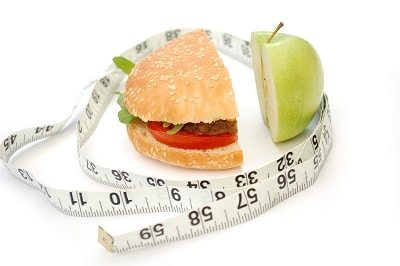
You know, you can gain kilograms by eating only cucumbers with chicken breast without salt, if you eat them in bulk, or you can lose weight without denying yourself your favorite treats - when losing weight quickly at home, it’s all about the difference in calories consumed and burned.
Any food contains calories and you can gain and lose weight from any food. But, of course, there are details.
For example, every half a kilo of carbohydrates in the body retains about one and a half liters of water. A whole charlatan trend is based on this, when, under various sauces, people cut down on carbohydrate consumption, lose weight by draining water, the reserves of which, of course, return with a change in diet.
And this is water, in any case, and not fat - people look the same. We read about this in “If you want to lose weight, don’t eat carbohydrates .
With such a diet, weight loss will occur even against the background of a calorie surplus, the only difference being that this is simply a loss of fluid and such a loss only works on the first 1.5-2 kg of this same water. This has nothing to do with fat, which means it cannot be an argument in favor of the quality of calories .
But there will always be a lady who will foam at the mouth to prove to you that cutting carbohydrates allows her to eat as much as she wants and not gain weight. And that carbohydrates are the main evil that makes you fat.
Poor thing, maybe it was ketosis that made her sick .
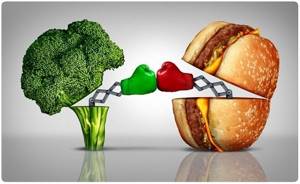
So again, we remind you that diets are based on very simple advice: “reduce or eliminate a food/macronutrient to lose weight.” Usually this means something high in calories, usually fatty, carbohydrate and sweet. In the style of “reduce fat to 30% of all calories. Or eat no more than 50 grams of carbohydrates per day.”
To explain the effect, these revolutionary nutritional methods and diets use all kinds of pseudo-physiology, talking about clean, proper nutrition (yep, Aryan food right), although everything is simple. If a food adds a lot of calories to your diet, remove it.
You will consume less and lose weight. This is not a magic of a special quality of calories, but a simple restriction of them .
Of course, by limiting fat to 30% or fat to 50 grams and below, a person automatically reduces calories and loses weight. Not because of the magical effect of having the right amount of fat/carbohydrates and their quality, but because you eat fewer calories in total. You just start eating a lot less without thinking about it.
A calorie is a unit of energy measurement, it is always the same. People seem to confuse it with weight. But it's the presence or absence of calories that matters for weight loss, so that's why 100 grams of celery is "better" than 100 grams of granola ( "13 Surprising Dishes and Foods That Have More Calories Than You Think" ).
Celery is larger in volume, high in fiber and water, but low in calories. And granola, for all its attractiveness and “fashionability,” is very nutritious and high in calories.
What are the benefits of carbohydrates for the body?

Glucose, as the final product of the breakdown of saccharides, is necessary for the heart and brain, normal functioning of the liver and muscles. But, above all, its quantity and speed of entry into the blood are important. Slow carbohydrates are good for humans. These are good sugars that perform many functions:
- Act as a source of energy. The body receives more than half of the calories it needs from sugars.
- They are structural elements of cells.
- Provides a feeling of fullness for a long time. This allows you to eat less and not overeat.
- Cleanse from toxins and various toxins. Dietary fibers are typical natural sorbents.
- Stimulates the gastrointestinal tract, eliminates constipation and irritable bowel syndrome.
- Stabilizes blood sugar levels and prevents spikes.
- Reduce blood pressure.
- They have an anti-inflammatory effect, promote wound healing, and stop bleeding, including internal bleeding.
- Remove excess cholesterol.
- They lead to weight loss, without stressing the body.
Complex carbohydrates are useful for pregnant women, since with a lack of fiber in the diet, women during this period suffer greatly from constipation and hemorrhoids. These substances are also important for athletes. Polysaccharides should be consumed after exercise to help restore muscles.
Daily carbohydrate intake
The misconception about minimizing carbohydrate intake is caused by a lack of understanding of the difference between complex and simple carbohydrates. A person needs to consume from 250 to 400 grams of carbohydrates per day, that is, about 50-80 percent of the total calories.
Strength training requires an increase in carbohydrate intake. If the workout is moderate, for every kilogram of body weight there should be 5 grams, and when it is aimed at building muscle - about 7-8 grams.
Effect on hunger
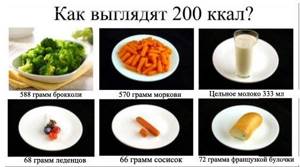
Imagine curd cheese, about 100 grams. packaged. Its calorie content will be 300-350 kcal. If you eat it, you will feel full, but for an hour maximum. For the same caloric value you can eat 50 grams. buckwheat and 200 gr. chicken, beef.
Feel the difference? The number of calories is the same, but the effect is very different - you feel full for 3 hours, and everything is spent as needed: meat - for building material, carbohydrates - for energy.
IIFM Flexible Diet: Which Carbohydrates Are Best to Eat for Weight Loss?
So it cannot be said that the source of calories is not important at all. This affects other aspects of physiology beyond the figure. Health, energy levels, hunger, appetite, athletic performance, long-term diet adherence, and everything else also play a role and interact with each other.
But calories always come first when it comes to losing weight, and food quality comes only second . Proteins, fats, carbohydrates, vitamins, minerals - these are things of a different order. Calories are responsible for energy balance and weight loss/gain.
Everything else is for what we get at the end: a cheerful, healthy person with good skin, hair, muscles, or Tara Reid.
Empty calories: which foods with carbohydrates should be avoided when losing weight

Today, low-carb diets (Atkins, Paleo, ketone) are incredibly popular. However, we should not forget that our body needs carbohydrates for normal functioning. The thing is that they are the main source of energy (four calories per gram). In addition, these organic substances contain large amounts of fiber, necessary for a balanced diet. However, there are also “empty” carbohydrates that are often present in the diet, although we ourselves do not notice it. They essentially just add extra calories to us with little nutrition, resulting in a spike in blood sugar levels. So what foods should you avoid? SPLETNIK.RU, together with an expert, has compiled a list of harmful carbohydrates.
Rice cakes
Often these croutons made from grains and cereals without salt are considered by many as a healthy alternative to bread. They are made from parboiled rice using the “popcorn” method, where liquid under the influence of high temperatures and pressure explodes the grain from the inside. In fact, this product has nothing to do with dietary nutrition: the calorie content of rice cakes is 310 kcal per 100 grams of product. Each cracker contains 17 grams of carbohydrates, which is also not very little.
Nutritionist Elizabeth Ann Shaw advises replacing them with whole grain toast - they have more fibre, complex carbohydrates, which will make you feel full.
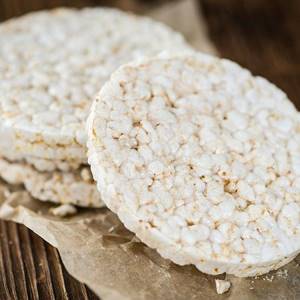
White rice
White rice is a rather controversial product. The rice diet is considered one of the most popular weight loss methods; on the other hand, such rice contains almost no vitamins and nutrients (no fiber, no vitamins, because all micro- and macroelements are removed along with the shell), and 100 grams contains about 80 grams carbohydrates.
White rice itself is not far from semolina porridge, which, in turn, is extremely close to white bread and sugar.
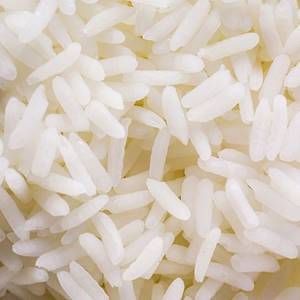
Instead of white rice, nutritionists advise choosing quinoa. This cereal contains more protein and fiber and almost 10 grams less carbohydrates.
Cereal flakes
Even healthy cereals and muesli can contain tons of sugar, so you should always carefully study the ingredients. According to Shaw, this breakfast cereal can contain about 22 grams of carbohydrates per serving.
Swap your usual muesli for whole grain oats, which are higher in fibre, phosphorus and potassium, which lower cholesterol and are good for preventing heart disease, says the expert.

White bread
According to Shaw, just one slice of white bread contains about 31 grams of carbohydrates. But there are no nutrients in it at all (this means that you get nothing but carbohydrates); instead of vitamins and microelements, all that remains is starch and calories that are quickly and easily absorbed by the body (from 200 to 300 calories per 100 grams).
Also, this product, which is familiar to everyone, has a high glycemic index and immediately causes an increase in glucose in the blood, in response, a lot of insulin is produced and the process of fat breakdown stops.

There is always an alternative - whole grain bread or bread with added seeds. The difference between whole grain bread and wheat bread and even coarse bread is that the milled grains are not sifted to obtain flour, which means that vitamins, amino acids and enzymes remain there, says Shaw.
Potato chips
No one denies that chips are delicious. But this salty snack contains a lot of unnecessary carbohydrates. About 15 Lay's potato chips contain 15 grams of carbohydrates, says nutritionist Natalie Rizzo.
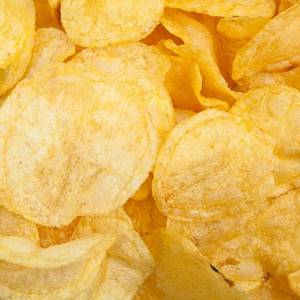
You can make your own healthier chips instead, or try veggie chips like kale chips if you want something salty and crunchy.
Pasta made from bread flour (“white” paste)
I don't deny that pasta is inexpensive and easy to prepare, but it is high in carbohydrates, almost 43 grams per serving. Soft wheat pasta contains a lot of starch, which is broken down into glucose, says Chicago-based nutritionist and A Sweat Life ambassador Maggie Michalczyk.
At the same time, pasta made from durum wheat is a complex carbohydrate and has a low glycemic index (only 50 units), so it can be consumed even on a diet.
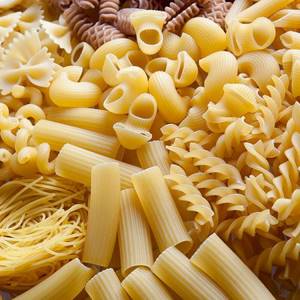
Whole wheat pasta tastes the same but has fewer carbs: about 37 grams of carbs. This type of pasta contains more fiber, which keeps you feeling full longer.
Tortilla
Tortilla is a thin flatbread made from unleavened dough that is so loved in Mexico. It is prepared from corn, wheat flour or a mixture of them. Yes, there is no yeast in the dough, but such flatbreads are sometimes fried in hydrogenated oil. In addition, the calorie content is 327 kcal per 100 grams of product plus 35 grams of carbohydrates.
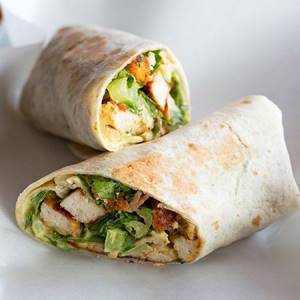
Instead of eating a tortilla, wrap pieces of chicken and low-fat cheese in leafy greens. This will help you avoid gaining excess weight and maintain your figure.
Juice
May fans of juice detox forgive us! But a glass of unsweetened, freshly squeezed apple juice contains about 48 grams of carbohydrates. Plus it contains a lot of fructose. This is especially true for juices such as banana, grape and pineapple. And what can we say about packaged...
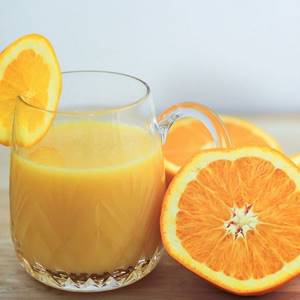
Doctors warn that sour juices (lemon, orange, apple, currant, cranberry) should not be drunk if you have a peptic ulcer or exacerbation of gastritis and pancreatitis. They contain many organic compounds that increase the acidity of gastric juice and can cause heartburn and an attack of pain. Replace the juice with water with a slice of lemon or lime. If that doesn't quench your thirst, drink coconut water, which contains about nine grams of carbohydrates, the expert advises.
Flavored yogurt
Yogurt is a great product only if it does not contain sweet additives in the form of jam, fruit jelly or chocolate flakes. In addition, this product also contains thickeners - gelatin, starch, pectin. One serving contains up to 45 grams of carbohydrates.
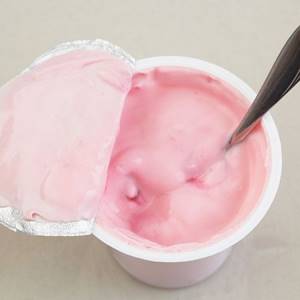
The solution is simple: buy natural yogurt and add fruits and berries yourself.
Energy bars
The average bar contains about 45 grams of carbohydrates, which can be great fuel for hiking, but not the best choice for a daily snack.

To make matters worse, the bars are loaded with extra sugars, corn syrup, or fructose. So, your task is to buy a bar with minimal sugar content. It would be preferable for it not to exist at all.
The energy value depends on the type of processing of cereals - raw is more healthy and low-calorie, fried or baked is more high-calorie, but is easier to digest without stress on the gastrointestinal tract. Protein bars are considered the healthiest of the bars. They satisfy your hunger for three to four hours and are generally low in calories, says Michalczyk.
Unusual coffee drinks
Coconut hot cream, Frappuccino, flat white, macchiato, raf, ice - of course, all this is incredibly tasty, but, alas, they contain no less calories and carbohydrates than a piece of cake.
Coffee with milk is not only high in calories, but also a difficult drink to digest, as it is a combination of “coffee” tonin and “milk” casein.

Crackers
Most crackers are made from white flour, with the addition of yeast, sugar, eggs and butter. 100 grams of product contain as much as 352 kcal. Plus, they're like seeds: once you start eating them, it's very difficult to stop.
- says Mikhalchik.

Good news: There are healthier snack options if you're really craving something crunchy. For example, gluten-free green buckwheat crackers, no sugar, no yeast. These, for example, can be found not only in “ABC of Taste”, but also in Elena Perminova’s bakery “Flax and Buckwheat”. According to the creator of the project, raw materials of our own production are used for baking - buckwheat and flax are grown on agricultural farms in the Tula region without the use of harmful fertilizers and preservatives.
Granola
This product has the same problem as muesli bars (essentially the same thing: oatmeal baked in the oven with the addition of honey, dried fruits, berries and nuts) - it contains a lot of sugar.

A half cup of granola contains more than 45 grams of carbohydrates and 370 to 480 calories. Therefore, this product certainly cannot be considered low-calorie. Keep in mind that this is still a snack, so it shouldn't replace a full breakfast seven days a week.
How to eat healthy while losing weight
In order for food to be better absorbed and not put additional stress on the stomach, experts advise choosing foods with the same digestion time for preparing dishes. For example, fish and meat are best eaten with vegetables or herbs, while fruits can be combined with non-starchy root vegetables.

When creating a menu, try to avoid the following combinations:
- proteins and carbohydrates - carbohydrates are digested in an alkaline environment, and protein foods are digested in an acidic environment. The simultaneous consumption of such products leads to fermentation, causes bloating and stomach cramps;
- proteins and sugars – sugar prevents the formation of gastric juice and slows down the process of digestion of protein foods;
- carbohydrates and carbohydrates - different types of carbohydrates cannot be digested in the body at the same time, most of the nutrients, with such a combination, remain undigested and prevent the passage of food;
- fats and proteins – fats slow down the digestion of proteins and reduce acidity in the stomach. When choosing this combination, you should add a large amount of greens to your diet, which will help normalize the production of gastric juice.
Tip: Foods containing large amounts of protein are better digested when warm. Cold protein foods enter the intestines “undigested,” which negatively affects the functioning of the gastrointestinal tract and causes disruption of metabolic processes.
In addition, for effective weight loss, it is important to know when during the day it is better to eat proteins, fats or carbohydrates. Nutritionists recommend consuming carbohydrates and fats in the first half of the day, and it is better to include the main amount of carbohydrates in the morning menu, and leave fat-containing foods for lunch. Protein should be present in all meals, but most of it should come at lunch and dinner.
Today, more and more people are opting for a healthy lifestyle and a balanced diet, because it’s no secret that our well-being and longevity directly depend on the foods we eat daily. A properly selected diet and the optimal ratio of proteins, fats and carbohydrates will help you maintain a beautiful figure and look young and attractive at any age.
